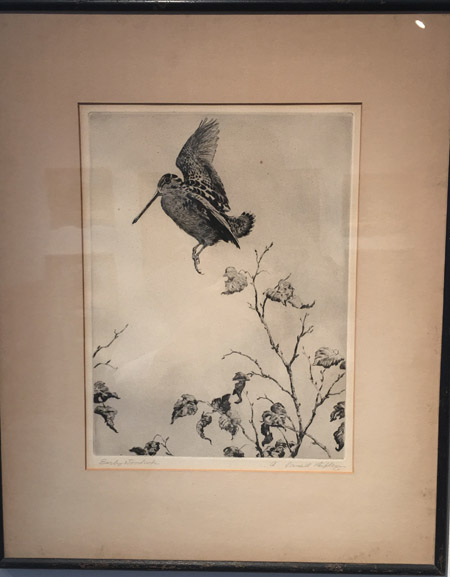
|
|
An outdoors enthusiast and ardent conservationist, Aiden Lassell Ripley adapted his early painting style and subject matter to suit his personal passion and, in so doing, became one the of the masters of sporting art in America. Born to a musical family in Wakefield, Massachusetts, Ripley exhibited an early talent for the tuba and piano. Around the age of eight, his creativity grew to encompass painting and drawing. As a teenager, he attended classes at the Fenway School of Illustration, a course of study interrupted by the onset of World War I. Military service in the Army took Ripley to France, where he saw heavy combat in key battles. Soon afterwards, he picked up his instrument again and spent the rest of his enlistment as a tuba player in General Pershings band, a position that kept him in Europe until 1919. Like most artists, Ripley found fewer buyers for his art during the Great Depression. He turned to illustration work and supplemented his income by teaching drawing at the Harvard School of Architecture. As part of the government-funded WPA initiative, Ripley executed murals for a Boston-area public library and post office. In 1930, the Guild of Boston Artists (which Ripley would later serve as president) sponsored an exhibit focused on sporting art. In spite of the economic downturn, the exhibition was quite successful and eventually led to Ripleys profitable partnership with the Sporting Gallery and Bookshop in New York. In 1942, his drypoint illustration of an American widgeon was selected as the Federal Duck Stamp. In 1954, Ripley became a member of the prestigious National Academy of Design, a rare honor for a sporting artist. His work was widely exhibited and often earned important prizes. During the last decade of his life, Ripley created a series of history paintings depicting Revolutionary War hero Paul Revere. Today, Ripleys work can be found in the permanent collections of the Smithsonian Museum of American Art, Art Institute of Chicago, High Museum, and Museum of Fine Arts, Boston. |
Home | About
the WS Gallery | Current
Exhibition | New
Additions | Search Our Inventory
| Commissioning Paintings | 19th
& 20th Century Oils | Contemporary
Artists | Works
on Paper & Collectibles | Books
| Christine Merrill
| Guest book | Email
Us
All images, designs and information on this site
are fully copyrighted © 1999
and may not be reproduced of used in any form or any manner, or displayed in
any way
on any website without the express written consent of The William Secord Gallery,
Inc.
William Secord Gallery, Inc.
29 West 15th Street 4th floor
New York, NY 10011
Between Fifth and Six Avenues
www.dogpainting.com
wsecord@dogpainting.com
Tel. 212-249-0075
212-249-0896
By appointment
